#changpa
Explore tagged Tumblr posts
Text
The magic of Ladakh, in Winter
*NEW on the BLOG* The magic of Ladakh, in Winter. Read about our travels to the land of passes - Ladakh, in winter.

View On WordPress
#buddhism#Buddhist#changpa#Charang monastery#frozen#Hanle Monastery#Himalaya#HimalayanChandraTelescope#Himalayas#Holiday in Himalayas#ice skating#icehockey#India#india travel#Indian#Kiang#Ladakh#Ladakh travel#Landscape#Mountain#Nature#offbeat#offbeat travel#Photography#scenery#snow#sustainable#sustainabletourism#telescope#Thikse Monastery
1 note
·
View note
Photo

The Rumtse to Tsomoriri Trek 2023 One of the most beautiful hiking adventures in the region of Ladakh. A high altitude trek which takes you through the spectacular Changthang region home to Changpa nomads and their hundreds of Pashmina goat and yaks. An exceptional trek going through numerous high Passes above 5000m. Plan this hiking trail as your next mountain adventure for the season. If you would like to join a group, check for our fixed departure dates. . . #rumtsetsomoriritrek #rumtsetotsomoriri #rumtsetotsomoriritrek #rumtsetokorzok #rumtsetsomoriri #tsokar #rumtse #tsomoriri #changthang #changpa #landscape #kyamar #mandalchanla #doksa #yalungnyaula #hikingadventures #remotetreks #trekkinginladakh #trekkinginchangthang #rupshu #trekkinginindia #trekkinginindianhimalayas #trekwithhippieinhills #trekwithlocals #adventurasindia #himalayantreks #dekhoapnadesh #hippieinhills #ladakh (at Ladakh, India) https://www.instagram.com/p/CqFFACSJO-b/?igshid=NGJjMDIxMWI=
#rumtsetsomoriritrek#rumtsetotsomoriri#rumtsetotsomoriritrek#rumtsetokorzok#rumtsetsomoriri#tsokar#rumtse#tsomoriri#changthang#changpa#landscape#kyamar#mandalchanla#doksa#yalungnyaula#hikingadventures#remotetreks#trekkinginladakh#trekkinginchangthang#rupshu#trekkinginindia#trekkinginindianhimalayas#trekwithhippieinhills#trekwithlocals#adventurasindia#himalayantreks#dekhoapnadesh#hippieinhills#ladakh
0 notes
Text
Meeting the Changpa Nomads: Experiencing Nomadic Life in Spiti Valley
Nestled amidst the majestic Himalayas, Spiti Valley is a land of unparalleled beauty and cultural richness. As one explores the enchanting landscapes and interacts with the local communities, there's an opportunity to delve deep into the heart of this region's unique way of life. Recently, I embarked on a journey to Spiti Valley, where I not only got a chance to witness the breathtaking scenery but also had the privilege to meet the Changpa nomads, who have been preserving their nomadic lifestyle for generations. Join me in this immersive adventure as we explore the mesmerizing Spiti Valley, and along the way, discover some fascinating Spiti Valley tour packages Spiti Valley Tour Packages that can make your trip equally remarkable. Additionally, for those interested in the local culture and crafts, we'll also touch upon some great places to shop in Spiti Valley Places To Shop In Spiti Valley.
A Glimpse into the Nomadic Lifestyle
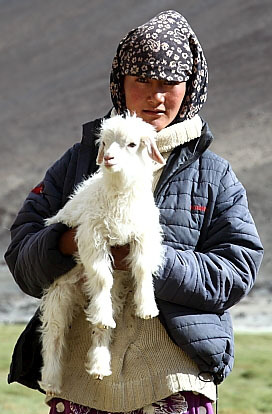
The Changpa people are a semi-nomadic Tibetan ethnic group that have called the high-altitude regions of Ladakh and the Spiti Valley their home for centuries. These nomads are primarily pastoralists, relying on their herds of yaks, goats, and sheep to sustain their way of life. The seasonal migration patterns of the Changpa are a well-choreographed dance with the changing seasons – they move to higher pastures during the warm months and descend to lower altitudes as winter approaches.
Embracing the Changpa Hospitality
As I embarked on a journey to experience this unique way of life, I was welcomed with open arms by the Changpa nomads. Their hospitality knows no bounds, as they shared their tents, meals, and stories with me. The traditional tents, known as 'rebo,' are woven with yak hair and are surprisingly warm, even in the chilly mountain nights. Sitting around a crackling fire, I had the privilege of listening to tales of their ancestral traditions, the challenges they face in this modern age, and their unwavering bond with their animals.
The Rhythm of Nomadic Life
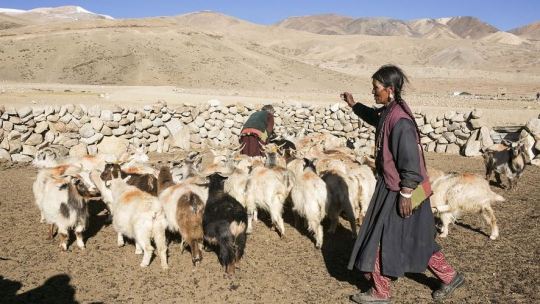
A day in the life of a Changpa nomad is a symphony of simple yet essential tasks. The crack of dawn marks the beginning of a routine that revolves around the well-being of their herds. Milking the yaks and goats is a daily ritual, producing the precious milk that is transformed into butter, cheese, and other sustenance. The nomads' intricate knowledge of the land is awe-inspiring – they can read the signs of nature to predict weather changes, locate water sources, and find the best grazing grounds.
Preserving Traditions in a Changing World
While the Changpa nomads have embraced certain aspects of modernity, such as solar panels to power their tents and some communication devices, they are fiercely determined to preserve their cultural heritage. Their traditional clothing, adorned with intricate designs and vivid colors, is a testament to their identity. Yet, like many indigenous communities, they face the challenges of a changing world – climate change affecting their grazing lands, economic pressures, and the allure of urban life drawing the younger generation away.
The Dance of Seasons: A Nomad's Calendar
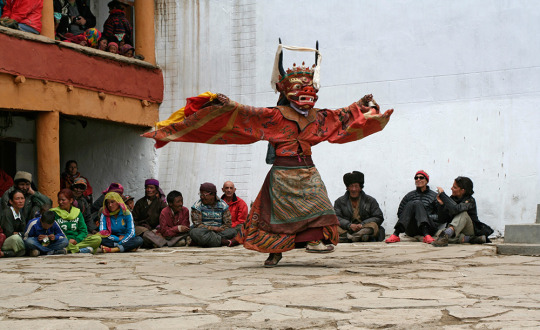
In the embrace of the Spiti Valley's rugged terrain, the Changpa nomads have honed a profound understanding of the changing seasons. Their migratory lifestyle isn't just about survival; it's a harmonious dance with nature's rhythm. As spring breathes life into the barren landscape, the Changpa pack their belongings and guide their herds towards the alpine meadows. Here, wildflowers carpet the ground, and the air is tinged with the aroma of fresh grass.
Summer brings with it a bustling atmosphere as the nomads make the most of the warmer months. The yaks and goats thrive on the lush pastures, their milk flowing abundantly. During these months, the Changpa come together, establishing temporary settlements where a sense of community blossoms. Children play and learn alongside their parents, absorbing age-old skills and wisdom that textbooks could never teach.
With the advent of autumn, the Changpa begin their descent to lower altitudes. The landscape changes hues, painting the valley with warm shades of gold and crimson. The air turns crisper, hinting at the approaching cold. The nomads work diligently, gathering provisions for the coming winter. Their connection to the earth is tangible as they store food, prepare wool for crafting warm clothing, and reinforce their tents against the impending snow.
Winter is a time of quiet reflection and resilience. The Changpa retreat to their winter settlements, nestled in valleys where the snow offers insulation against the biting cold. Life slows down, and the focus turns inward. Stories are shared around fires, and traditions are passed down through generations. The yaks and goats are carefully tended, their thick fur providing both sustenance and warmth.
Lessons Learned and Shared

My time among the Changpa nomads was a humbling experience that left an indelible mark on my soul. Their harmonious coexistence with nature, their resourcefulness, and their unbreakable bonds with their animals offer profound lessons for the modern world. As I bid farewell to the rebo and the warmth of the campfire, I carried with me not just memories but a renewed perspective on what it means to truly live in harmony with the environment.
Meeting the Changpa nomads was an invitation to step outside the confines of our modern lives and immerse ourselves in a reality that is both timeless and illuminating. Their story isn't just about survival – it's a testament to the indomitable human spirit, the art of living in harmony with nature, and the beauty of traditions that transcend time. As the wind carried whispers of their songs and laughter, I left the Spiti Valley with a heart full of gratitude and a determination to carry their stories forward, so they may inspire others as they inspired me.
0 notes
Text
#WatercolorWednesday:

Portrait of a Ladakhi Mountain Goat [Changthangi*]
India, Mughal dynasty, c.1601-25
Opaque watercolor, ink, gold on paper
37.9 × 25.6 cm (14 7/8 × 10 1/8 in.)
The Art Institute of Chicago 1919.944: https://www.artic.edu/artworks/76868/portrait-of-a-ladakhi-mountain-goat
🆔 “The Changthangi [aka Changpa, Ladakh Pashmina, Kashmiri] is a breed of cashmere goat native to the high plateaus of Ladakh in northern India. It is closely associated with the nomadic Changpa people of the Changthang plateau….The intense cold of the region causes the goats to grow a thick undercoat, which is harvested to produce the fine pashmina grade of cashmere.”
https://en.wikipedia.org/wiki/Changtha
#IndianArt #SouthAsianArt
#animals in art#painting#Indian art#South Asian art#Asian art#Mughal art#miniature#natural history art#goat#Changthangi#livestock#domesticated animals#watercolor#Watercolor Wednesday#Art Institute of Chicago
673 notes
·
View notes
Text
Wildlife of Ladakh Through the Lens: A Photography Adventure

In the heart of the rugged, high-altitude region of northern India lies a land of stark beauty and uncharted wilderness. Ladakh, often referred to as the "Land of High Passes," is a captivating destination that offers a unique blend of breathtaking landscapes and a rich tapestry of wildlife. This remote area, characterized by its towering mountains, deep valleys, and vast deserts, is not only a haven for adventure seekers but also a paradise for nature lovers and photographers. Wildlife of Ladakh and Photography in Ladakh are two intertwined themes that present an unparalleled opportunity to explore and capture the essence of this extraordinary region.
Ladakh’s diverse ecosystem is home to a variety of wildlife species that have adapted to the harsh climatic conditions. One of the most iconic inhabitants is the elusive snow leopard, a creature that has captured the imagination of many. These magnificent big cats are perfectly adapted to the rocky terrain and frigid temperatures, making them a rare and prized sight for wildlife enthusiasts and photographers alike. The high-altitude deserts and rugged mountains provide the perfect backdrop for capturing these predators in their natural habitat.

In addition to snow leopards, Ladakh boasts a wealth of other wildlife species. The Tibetan antelope, or chiru, is another remarkable resident. Known for their grace and speed, these antelopes are often seen grazing on the sparse vegetation of the region. Similarly, the Himalayan blue sheep, or bharal, can be spotted on the steep slopes, their blue-grey coats blending seamlessly with the rocky surroundings. Photographers will find ample opportunities to capture these animals in action, from grazing herds to playful lambs.
Bird enthusiasts will be delighted by the avian diversity in Ladakh. The region is home to several species of birds of prey, including the golden eagle and the lammergeier, or bearded vulture. These majestic birds can often be seen soaring high above the valleys, their keen eyes scanning the terrain for prey. The sight of a golden eagle in flight, set against the dramatic backdrop of the snow-capped peaks, is a photographer’s dream. Additionally, the tranquil waters of Ladakh’s high-altitude lakes attract migratory birds such as the black-necked crane, bar-headed goose, and ruddy shelduck, offering further opportunities for stunning wildlife photography.
One of the most striking aspects of Ladakh is its ability to change with the seasons. Each season brings its own unique charm and photographic opportunities. In the summer, the landscape is bathed in warm hues, with the alpine meadows coming to life with vibrant wildflowers. This is an excellent time for capturing the contrast between the colorful flora and the arid surroundings. The winter months, on the other hand, cloak Ladakh in a blanket of snow, transforming it into a winter wonderland. This season offers a chance to photograph the region’s wildlife against a pristine white backdrop, as well as the hardy locals going about their daily lives in the extreme cold.

To truly experience and capture the essence of Wildlife of Ladakh and Photography in Ladakh, it’s essential to explore the region’s diverse landscapes. The Nubra Valley, known for its sand dunes and double-humped Bactrian camels, offers a unique desert landscape that contrasts sharply with the surrounding snow-capped peaks. Photographers can capture the striking juxtaposition of the camels against the backdrop of the towering mountains, creating images that highlight the diversity of Ladakh’s terrain.
The Changthang Plateau, located in the southeastern part of Ladakh, is another must-visit destination for wildlife photographers. This vast, high-altitude plateau is home to the nomadic Changpa people and their herds of pashmina goats. The goats, prized for their soft and warm wool, are often seen grazing on the sparse vegetation of the plateau. The area is also a haven for birdlife, with several high-altitude lakes attracting a variety of migratory birds. Photographers can capture the unique lifestyle of the Changpa people, as well as the stunning landscapes and wildlife that characterize this remote region.
For those looking to capture the majestic peaks and pristine lakes of Ladakh, the Pangong Tso and Tso Moriri lakes are not to be missed. These high-altitude lakes, with their crystal-clear waters reflecting the surrounding mountains, provide a serene and picturesque setting for photography. The changing colors of the lakes, from deep blue to shimmering turquoise, offer endless opportunities for capturing the beauty of Ladakh’s natural landscapes. Additionally, the shores of these lakes are home to several species of wildlife, including the kiang, or Tibetan wild ass, which can be seen grazing on the grassy plains.
Photographers visiting Ladakh should also take the time to explore the region’s rich cultural heritage. The ancient monasteries, with their intricate architecture and vibrant prayer flags, offer a glimpse into the spiritual life of the Ladakhi people. The Hemis Monastery, one of the largest and wealthiest monasteries in Ladakh, is particularly famous for its annual Hemis Festival, which features colorful masked dances and rituals. Capturing these cultural events and the daily lives of the monks can add a unique dimension to your Ladakh photography portfolio.

When planning a photography expedition to Ladakh, it’s important to be well-prepared for the challenges posed by the high-altitude environment. The thin air and extreme temperatures can be physically demanding, so acclimatization is key. Ensure that you have the necessary permits for restricted areas, as well as appropriate gear to protect your equipment from the harsh conditions. A sturdy tripod, wide-angle lenses, and telephoto lenses are essential for capturing the diverse landscapes and wildlife. Additionally, carrying spare batteries and memory cards is crucial, as the cold temperatures can drain battery life quickly.
Wildlife of Ladakh and Photography in Ladakh offers an unparalleled opportunity to explore and capture the untamed beauty of this extraordinary region. From the elusive snow leopard to the graceful Tibetan antelope, and from the soaring golden eagle to the serene high-altitude lakes, Ladakh is a photographer’s paradise. The ever-changing landscapes, diverse wildlife, and rich cultural heritage provide endless possibilities for creating stunning and memorable images. So pack your camera gear, embrace the adventure, and get ready to explore the wild and wonderful world of Ladakh.
2 notes
·
View notes
Text
Best Places for Camping in Ladakh: A Thrilling Escape into the Wilderness
Ladakh, the land of high passes, is a dream destination for adventure seekers and nature lovers. Known for its breathtaking landscapes, towering mountains, and serene lakes, Ladakh offers a perfect blend of adventure and tranquility. Camping in Ladakh allows you to experience the raw beauty of the region while staying close to nature. From the banks of the pristine Pangong Lake to the rugged terrains of Nubra Valley, the best places for camping in Ladakh offer an unforgettable experience. In this article, we will explore the best places for camping in Ladakh and the top things to do in Ladakh, ensuring that your adventure is packed with excitement and serenity.

1. Pangong Lake
Pangong Lake is undoubtedly one of the most popular camping destinations in Ladakh. This stunning lake, situated at an altitude of 4,350 meters, is known for its ever-changing colors, ranging from azure blue to green and even golden. Camping by the shores of Pangong Lake offers a unique experience, allowing you to wake up to the mesmerizing views of the lake surrounded by the majestic Himalayas.
While camping at Pangong Lake, you can explore the nearby attractions such as Spangmik Village and the lesser-known Merak Village. The tranquil environment, coupled with the clear night sky adorned with countless stars, makes Pangong Lake one of the best places for camping in Ladakh. Additionally, don’t miss out on stargazing, photography, and simply soaking in the peaceful ambiance of this natural wonder.
2. Nubra Valley
Nubra Valley, also known as the Valley of Flowers, is another incredible destination for camping in Ladakh. Located at an altitude of 3,048 meters, Nubra Valley is famous for its dramatic landscapes, sand dunes, and double-humped Bactrian camels. The valley is surrounded by the Karakoram Range on one side and the Ladakh Range on the other, making it a picturesque spot for camping.
Camping in Nubra Valley offers a chance to explore the vibrant culture of the local villages such as Diskit, Hunder, and Turtuk. You can also visit the Diskit Monastery, which houses a giant statue of Maitreya Buddha, and enjoy a thrilling camel ride on the sand dunes of Hunder. Nubra Valley is one of the best places for camping in Ladakh, where you can experience the unique blend of desert and mountain landscapes.

3. Tso Moriri Lake
Tso Moriri Lake, often referred to as the “Mountain Lake,” is another gem in Ladakh that offers an exceptional camping experience. Located at an altitude of 4,522 meters, Tso Moriri is the largest high-altitude lake in India, surrounded by barren hills and snow-capped peaks. The lake’s crystal-clear waters reflect the surrounding mountains, creating a surreal and tranquil environment.
Camping at Tso Moriri Lake allows you to experience the untouched beauty of Ladakh. The area is home to a variety of wildlife, including the rare Tibetan gazelle and the black-necked crane. While camping, you can also visit the nearby Korzok Village, one of the highest inhabited villages in the world, and interact with the friendly Changpa nomads. Tso Moriri Lake is undoubtedly one of the best places for camping in Ladakh, offering a perfect blend of solitude and natural beauty.
4. Markha Valley
For trekking enthusiasts, Markha Valley is one of the best places for camping in Ladakh. The Markha Valley trek is one of the most popular treks in the region, taking you through remote villages, ancient monasteries, and breathtaking landscapes. The trek begins from Chilling and passes through stunning locations such as Skiu, Sara, Hankar, and Nimaling, before concluding at Hemis Monastery.
Camping along the Markha Valley trek allows you to immerse yourself in the pristine beauty of Ladakh’s wilderness. The valley is known for its dramatic cliffs, deep gorges, and lush green fields. You can also visit the ancient Markha Monastery and the remote village of Hankar, where you can experience the traditional Ladakhi lifestyle. The Markha Valley trek is a must-do for adventure seekers, offering an unparalleled camping experience in the heart of Ladakh.

5. Sarchu
Located on the Manali-Leh Highway, Sarchu is a popular camping destination for travelers journeying between Manali and Leh. Situated at an altitude of 4,290 meters, Sarchu is known for its rugged terrain, vast plains, and stunning views of the surrounding mountains. The area is often used as an overnight stop for those traveling by road, making it one of the best places for camping in Ladakh.
Camping at Sarchu offers a unique experience as you camp under the open sky, surrounded by the raw beauty of Ladakh’s wilderness. The area is also a base for various treks, including the challenging Zanskar trek. The cold and windy conditions at Sarchu add to the thrill of camping, making it an adventure you won’t forget. While at Sarchu, be sure to explore the nearby passes such as Baralacha La and Lachulung La, which offer stunning panoramic views.
Things to Do in Ladakh
Apart from camping, Ladakh offers a plethora of activities that cater to all kinds of travelers. Here are some of the top things to do in Ladakh:
Trekking: Ladakh is a trekker’s paradise, with popular treks like the Chadar Trek, Stok Kangri Trek, and Sham Valley Trek offering a mix of adventure and scenic beauty.
Monastery Visits: Ladakh is home to several ancient monasteries such as Hemis, Thiksey, and Alchi, where you can experience the region’s rich cultural heritage.
River Rafting: The Zanskar River offers thrilling white-water rafting opportunities, taking you through deep gorges and rugged landscapes.
Biking: A road trip from Manali to Leh or Srinagar to Leh is a dream for bikers, offering breathtaking views and challenging terrains.
Wildlife Spotting: Ladakh is home to unique wildlife, including the elusive snow leopard, Himalayan marmot, and Tibetan wild ass. The Hemis National Park is a great place to spot these animals.
Conclusion
Ladakh is a land of adventure, serenity, and unparalleled beauty. The best places for camping in Ladakh offer a chance to connect with nature and experience the region’s raw and unspoiled landscapes. Whether you choose to camp by the shores of Pangong Lake, in the rugged Nubra Valley, or along the scenic Markha Valley trek, each destination promises a unique and unforgettable experience. Coupled with the myriad of things to do in Ladakh, your camping adventure is sure to be a memorable one, filled with breathtaking moments and serene escapes.
0 notes
Text
Discover the Magic of Leh Ladakh: Unforgettable Adventures Await

Dreaming of high-altitude adventures? Dive into the stunning beauty of Leh Ladakh with custom tour packages designed to make your journey unforgettable. Located amidst the majestic Himalayas, this region is perfect for thrill-seekers and nature lovers alike. Join us as we explore the top Leh Ladakh tour packages, uncovering the best spots and experiences that promise an adventure of a lifetime.
1. Leh Ladakh's Unique Landscape
Leh Ladakh, known as the Land of High Passes, boasts a landscape unlike any other. Imagine towering mountains, stark deserts, and pristine lakes creating a breathtaking backdrop for your travels. Tour packages to this region offer the chance to explore these awe-inspiring vistas, where each turn reveals a new facet of its natural beauty. Traveling through high-altitude passes, you’ll be treated to panoramic views that are both thrilling and serene.
2. Discover Ladakh's Spiritual Essence
Beyond its physical beauty, Ladakh is a spiritual haven with a rich cultural heritage. The region’s sparse population is home to numerous ancient monasteries, where you can immerse yourself in tranquility and spirituality. A well-crafted tour itinerary will take you to these monastic marvels, offering a unique blend of Buddhist and local traditions. Participate in local festivals, witness traditional rituals, and experience a deep cultural immersion that goes beyond typical travel experiences.
3. Adventure Activities in Leh Ladakh
For those seeking adrenaline-pumping activities, Leh Ladakh tour packages is a paradise. From white-water rafting in the Zanskar River to mountain biking on rugged terrains, the region offers endless excitement. Hiking in the Markha Valley, camping under the starry skies, and riding on the world's highest motorable road at KhardungLa are just a few of the thrilling experiences that await. Every day in Leh Ladakh tour packages promises a new adventure, making it an ideal destination for the adventurous at heart.
4. The Majestic Pangong Lake
A trip to Leh Ladakh tour packages wouldn’t be complete without visiting Pangong Lake, a highlight of the region. Situated at an elevation of 4,350 meters, this lake is renowned for its changing shades of blue set against towering mountains. Many tour packages include a visit to this serene location, allowing you to soak in its ethereal beauty. Whether you choose to take a leisurely boat ride or simply relax by the shore, Pangong Lake offers a tranquil escape that leaves a lasting impression.
5. Encounters with Ladakhi Tribes
One of the most enriching aspects of a Leh Ladakh tour packages is the opportunity to meet the local tribes. Many packages include interactions with groups like the Changpas, giving you a glimpse into their unique way of life. Learn about their traditions, savor local delicacies, and appreciate the simplicity and resilience of Ladakhi culture. These encounters provide a rare insight into how these communities thrive in harmony with their harsh yet beautiful environment.
Embark on Your Leh Ladakh Journey with Swan Tours for Unforgettable Memories
Leh Ladakh tour packages stands as a testament to nature’s grandeur and human resilience. At Swan Tours, one of India’s premier tour operators, we understand the allure of this high-altitude paradise. Our carefully curated tour packages aim to capture the essence of Leh Ladakh, combining natural beauty, thrilling adventures, and rich cultural experiences into one unforgettable journey.
Tailored Tour Packages
Our Leh Ladakh tour packages are designed to cater to a variety of interests and preferences. Whether you’re a nature enthusiast, an adventure junkie, or a culture seeker, we have something special for you. From exploring serene landscapes and engaging in exhilarating activities to immersing yourself in the spiritual and cultural fabric of the region, our packages ensure a comprehensive and fulfilling travel experience.
Expert Guidance and Support
Travelling to high-altitude regions like Leh Ladakh tour packages requires careful planning and expert guidance. At Swan Tours, we provide all the support you need to make your trip smooth and enjoyable. Our experienced guides are well-versed in the local terrain and culture, ensuring that you have a safe and enriching journey. We take care of all the logistics, so you can focus on enjoying your adventure.
Affordable and Flexible Options
We believe that everyone should have the opportunity to experience the magic of Leh Ladakh. That’s why we offer a range of affordable tour packages without compromising on quality. Our flexible options allow you to customize your itinerary based on your preferences, ensuring that your trip is tailored to your needs and interests.
Sustainable and Responsible Travel
At Swan Tours, we are committed to promoting sustainable and responsible travel practices. We work closely with local communities to ensure that our tours benefit the region’s economy and culture. By choosing our Leh Ladakh tour packages, you’re not only embarking on an unforgettable adventure but also supporting the preservation of this unique destination.
Conclusion
Leh Ladakh tour packages is a destination like no other, offering a perfect blend of natural beauty, adventure, and cultural richness. With Swan Tours tour operators in India, you can embark on a journey that promises unforgettable memories and life-changing experiences. Our tailored tour packages, expert guidance, and commitment to sustainable travel make us the ideal choice for your Leh Ladakh tour packages adventure.
Don’t wait any longer to discover the wonders of Leh Ladakh. Contact Swan Tours today and let us help you plan the trip of a lifetime. Whether you’re seeking serenity in pristine landscapes, the thrill of high-altitude adventures, or the warmth of Ladakhi culture, our tour packages are designed to make your dreams come true. Let Swan Tours be your guide to the extraordinary world of Leh Ladakh, where every moment is an adventure waiting to unfold.
0 notes
Text
Adventure Sports In Ladakh: Quad Biking Thrills
Ladakh, often referred to as the "Land of High Passes," is a haven for adventure enthusiasts. The rugged terrain, towering mountains, and breathtaking landscapes make it an ideal destination for various adrenaline-pumping activities. Among the many adventure sports in Ladakh, quad biking stands out as a unique and exhilarating experience. Let's embark on a journey to explore the thrills and excitement of Quad Biking In Ladakh. Adventure Sports In Ladakh offer a unique blend of thrill and serenity, and quad biking is a perfect example of this combination. The rugged beauty of Ladakh, coupled with the adrenaline rush of quad biking, creates an unforgettable experience.

The Call of the Wild: Embracing the Adventure
Ladakh's stark beauty is unparalleled, with its expansive valleys, crystal-clear lakes, and the majestic Himalayas. This remote region offers a sense of solitude and adventure that few places can match. As adventure sports in Ladakh gain popularity, more and more thrill-seekers are drawn to its challenging landscapes. From trekking and mountain biking to river rafting and paragliding, Ladakh offers a plethora of options for the daring. However, the experience of quad biking is a relatively new addition, yet it has quickly become a favorite among adventurers.
The Quad Biking Experience: An Adrenaline Rush
Quad Biking In Ladakh is not just about the thrill of riding; it's about connecting with nature in one of the most spectacular environments on earth. Quad bikes, also known as all-terrain vehicles (ATVs), are perfect for navigating Ladakh's rocky paths and uneven terrains. These powerful machines allow riders to conquer the rugged landscapes with ease, providing an adrenaline rush like no other.
The adventure usually begins in Leh, the heart of Ladakh. After a brief orientation and safety briefing, riders gear up and set out on their quad bikes. The sensation of riding through Ladakh's desolate yet captivating terrain is unmatched. As the quad bikes roar to life, riders are immediately immersed in the stark beauty of the region.

Conquering the Terrain: From Valleys to High Passes
One of the highlights of quad biking in Ladakh is the diverse terrain. Riders traverse through picturesque valleys, ascend steep mountain trails, and cross icy streams. Each twist and turn of the trail brings new challenges and breathtaking vistas. The journey often includes stops at various points of interest, such as ancient monasteries, remote villages, and scenic viewpoints.
The Nubra Valley, with its sand dunes and double-humped Bactrian camels, is a popular destination for quad biking. The contrast between the barren mountains and the lush greenery along the Shyok and Nubra rivers creates a mesmerizing landscape. Riders can also explore the Changthang Plateau, home to the nomadic Changpa herders and the stunning Tso Moriri Lake.
Safety First: Ensuring a Secure Adventure
While quad biking is an exhilarating sport, safety is paramount. Organizers ensure that participants are well-equipped with helmets, gloves, and protective gear. Experienced guides lead the expeditions, offering valuable insights into the region's geography and culture. They also ensure that riders adhere to safety protocols and respect the fragile environment.
The unpredictability of Ladakh's weather adds another layer of adventure to the experience. Riders must be prepared for sudden changes, from intense sunlight to chilly winds and even occasional snowfall. However, these challenges only enhance the sense of accomplishment and adventure.

Beyond the Ride: Cultural and Natural Wonders
Quad biking in Ladakh is not just about the ride; it's an opportunity to immerse oneself in the local culture and natural wonders. Along the way, riders often encounter hospitable locals who are eager to share their stories and traditions. Visiting ancient monasteries, such as Thiksey and Diskit, offers a glimpse into Ladakh's rich spiritual heritage.
The region's unique wildlife, including the elusive snow leopard, Himalayan blue sheep, and various bird species, adds to the allure of the adventure. The sight of yaks grazing in high-altitude meadows and marmots scurrying across the landscape creates unforgettable memories.

Conclusion: The Ultimate Adventure
Whether you're a seasoned adventurer or a novice seeking a new thrill, Quad Biking In Ladakh promises an adventure of a lifetime. So, gear up, rev your engines, and get ready to conquer the Land of High Passes on four wheels.
0 notes
Text
Bike on Rent Chandigarh to Leh
Sharp Time Travels helps you by providing Bike on Rent Chandigarh to Leh. Imagine going to bed under a starlit sky brightened up by the milky way at Hanle. Imagine riding your bike with the Changpa nomads in Changthang. Imagine looking over the vast expanse of Zanskar from the top of the Zangla Fort.
0 notes
Text
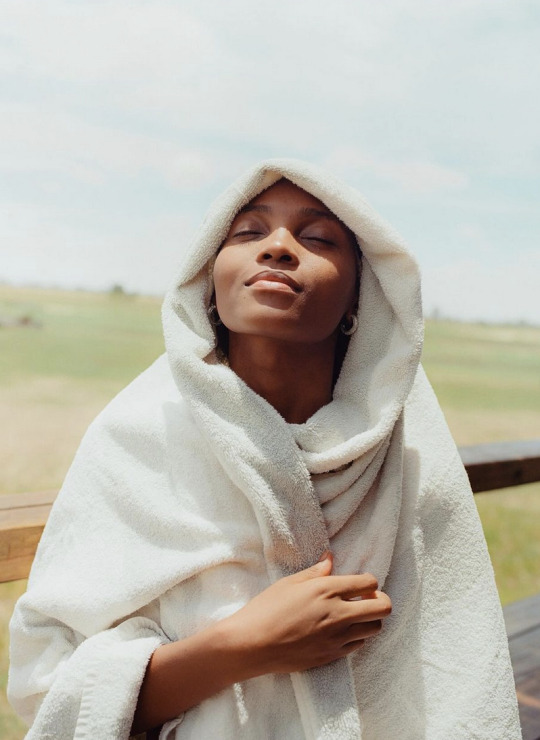

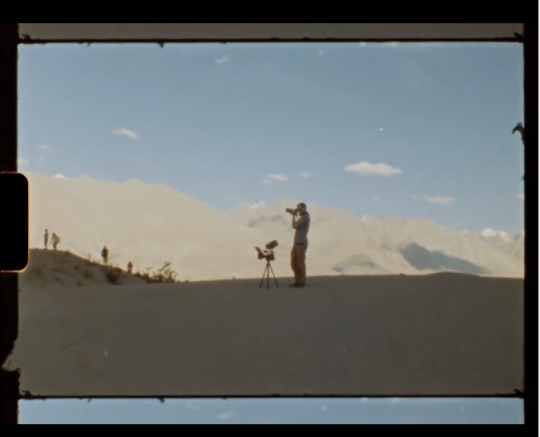
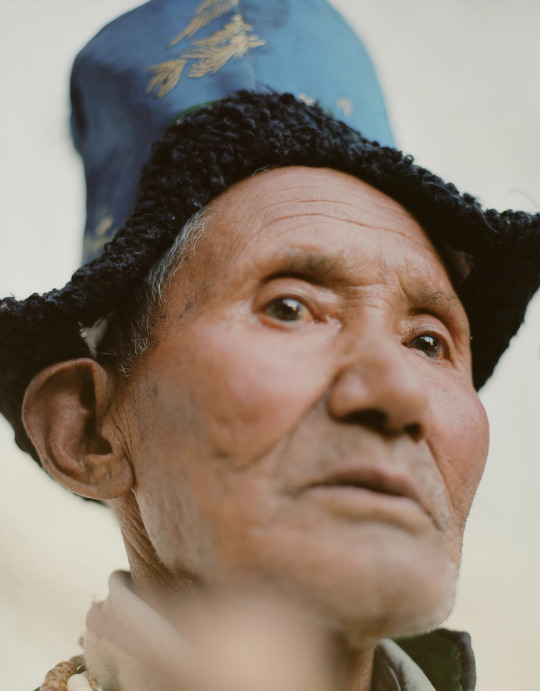
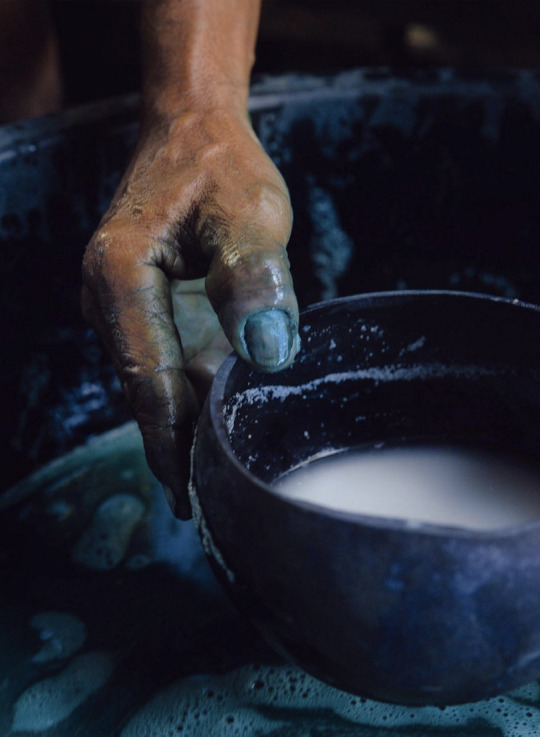

by P i e A e r t s | because.people.matter
VIEW: journey
images:
series of photographs for @belmond shot in Botswana // @belmondsafaris #theartofbelmond
resilient Changpa ladies in Ladakh
still from Ladakh film expedition
Silk Road memoirs pt 3
nestled in the pristine jungles of central bali, in the midst of a lush indigo plantation lies a Japanese-inspired indigo-dyeing studio. An artisanal approach to the age-old art of natural indigo dyeing, true craftsmanship, run by Sebastian Message, his wife Ayu Pupa and their team. Work for @tiantaru
india archive pt 5
1 note
·
View note
Text
Discover the Mystique of Pangong Lake

Pangong Tso, nestled amidst the majestic Himalayas, beckons with its ethereal beauty and serene tranquility. As your trusted guide, Yashvi Tours & Travels invites you to unveil the mystique of this enchanting lake, leaving you with memories etched in the hues of turquoise. Ready to embark on this unforgettable journey? Book your Ladakh trip today and let us craft the perfect Pangong adventure for you!
Beyond Breathtaking
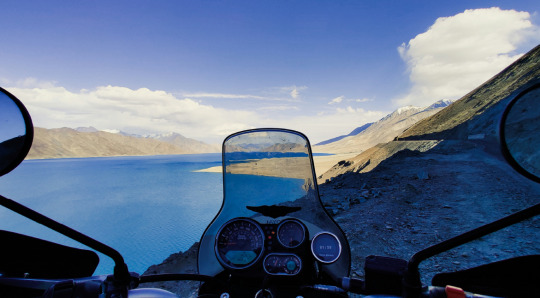
Imagine a canvas painted with shades of azure, reflecting snow-capped peaks in its crystal-clear embrace. This is Pangong Tso, where the air whispers tales of ancient mysteries and the silence speaks volumes. Witness the mesmerizing transformation of its hues as sunlight dances on the water, creating a kaleidoscope of color. Be mesmerized by the starlit spectacle at night, where the Milky Way paints the sky in a celestial dance. Keep your eyes peeled for playful marmots and soaring birds, adding to the symphony of nature’s wonders.
Journeying Beyond the Lake
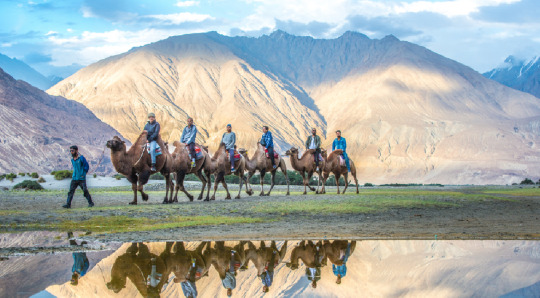
We curate itineraries that unlock the secrets beyond the lake’s edge. Immerse yourself in the vibrant culture of the Changpa people in Spangmik Village. Conquer the world’s third highest motorable pass, Chang La, and marvel at the panoramic vistas that leave you breathless. Explore the bustling markets and ancient monasteries of Leh, and discover the hidden gem of Nubra Valley, known for its sand dunes and unique Bactrian camel rides.
Unveiling the Season’s Embrace
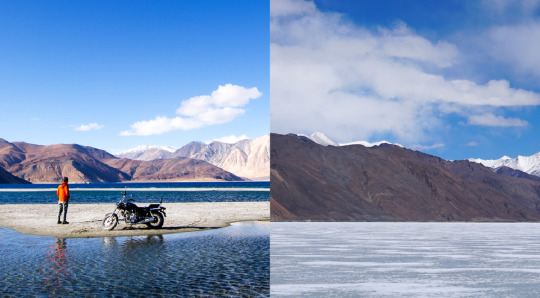
Pangong Tso unveils its magic throughout the year, each season offering a unique brushstroke:
June to September: Pleasant weather paints the landscape vibrant, ideal for outdoor adventures and sightseeing.
January to February: Witness the lake frozen in its entirety, a surreal winter wonderland. Embrace the cold and limited accessibility for a truly unique experience.
Why Should Your Soul Seek Pangong?
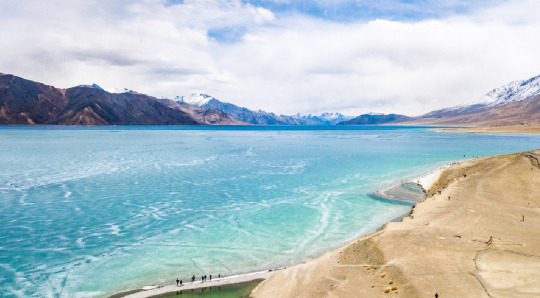
Pangong Lake offers a sanctuary for weary souls seeking solace amidst nature’s grandeur. Whether you’re an avid photographer capturing the kaleidoscope of colors or a spiritual seeker meditating by the tranquil shores, Pangong Lake captivates the hearts of all who venture here. Its remote location and untouched beauty offer a rare opportunity to disconnect from the chaos of modern life and reconnect with the essence of existence.
Tips for a Seamless Journey:
Yashvi Tours & Travels ensures your Pangong adventure is smooth sailing:
Acclimatize wisely: Respect the high altitude. Take it slow, stay hydrated, and avoid strenuous activities on arrival.
Pack for the elements: Be prepared for chilly nights and fluctuating temperatures. Pack layers, sunscreen, sunglasses, a hat, and sturdy shoes.
Respect the environment: Leave no trace behind and dispose of waste responsibly.
Activities to Stir Your Soul
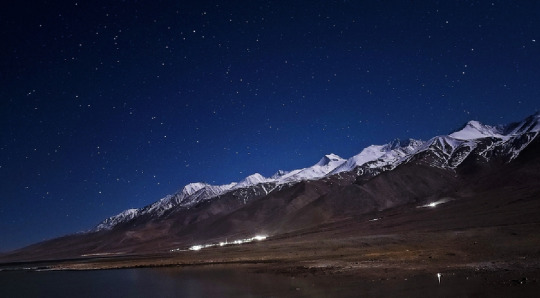
Pangong Tso isn’t just a destination; it’s a blank canvas waiting for you to paint your own adventure. Immerse yourself in the soul-stirring activities that capture the essence of this magical place:
Dance with the Stars: On a clear night, let the majestic Himalayas unveil their true magic. As darkness descends, the sky explodes with a million celestial diamonds, offering a front-row seat to the Milky Way’s mesmerizing dance. This is a moment etched in eternity, a memory you’ll carry long after the stars fade.
Hike into Nature’s Embrace: Lace up your boots and feel the adrenaline rush as you embark on a trek through the rugged, yet breathtaking, mountains surrounding Pangong Tso. With each step, you’ll breathe in the crisp Himalayan air, conquer challenging terrains, and be rewarded with panoramic vistas that leave you speechless. The Himalayas aren’t just scenery; they’re an experience that seeps into your soul.
Capture the Enchantment: Unleash your inner artist and translate the lake’s ethereal beauty onto your lens. Let every click immortalize a moment – the play of sunlight on the turquoise water, the snow-capped peaks mirroring in its depths, or the vibrant hues that paint the sky at sunrise and sunset. These photographs won’t just be souvenirs; they’ll be portals back to the serenity you discovered at Pangong Tso.
Find Inner Peace: Seek solace in the tranquility of the lake. Unfurl your yoga mat on the serene shores and let the gentle breeze and rhythmic lapping of water lull you into a state of deep relaxation. Or, practice meditation, merging your breath with the vastness of the landscape and finding yourself amidst the majestic silence. This is more than just an activity; it’s a journey of self-discovery and rejuvenation.
Glide in Tranquility: Embark on a boat ride across the mirror-like surface of the lake. Feel the gentle sway of the vessel as it carves through the crystal-clear water. Let the sun warm your face, the cool breeze caress your hair, and the silence wash over you. This is a moment of pure serenity, a chance to disconnect from the world and reconnect with yourself.
These are just a few ways to paint your Pangong Tso adventure with vibrant hues.
Conclusion
Embark on an extraordinary journey with Yashvi Tours & Travels to Pangong Lake, where every moment surpasses expectations. Our local expertise ensures a seamless experience, from comfortable accommodations to handling permits and logistics. Safety and security are paramount, as we provide experienced guides and promote responsible tourism.
Let us guide you to the heart of Pangong Tso, where memories are made to last a lifetime. With meticulously crafted itineraries and personalized service, we guarantee joy, wonder, and discovery at every turn. Book your Ladakh travel today and discover the timeless beauty of Pangong Lake with Yashvi Tours & Travels by your side.
Article Source: https://www.yashvitours.com/discover-the-mystique-of-pangong-lake/
0 notes
Photo
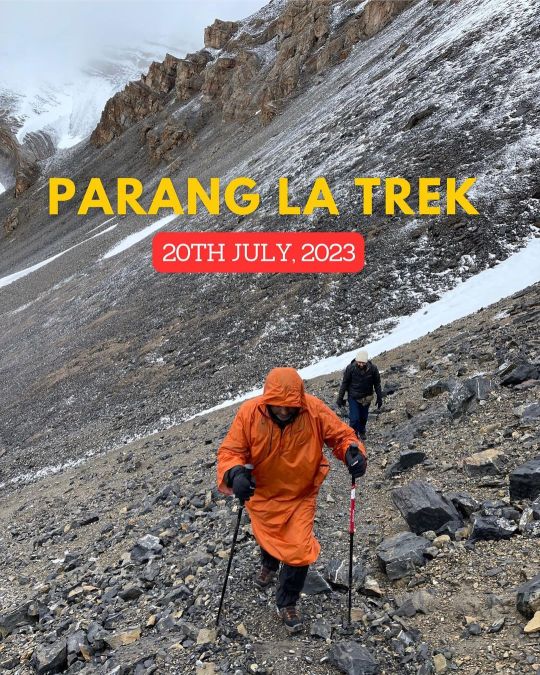
The Classic Trans-Himalayan expedition of Parang la (5580m). A crossover trek of a high Himalayan Pass connecting the arid region of Spiti in Himachal Pradesh to Changthang in eastern Ladakh. One of the most sought out remote treks in Indian Himalaya. With multiple river crossings, camping in the wild, walking through loose scree; the trail throws multiple challenges to keep you wary of itself. A hiking trail which has everything a Himalayan Trek has to offer. Wildlife, Culture, Nature; everything that can make this trek your dream trek. Come, join us this summer. Our first fixed departure is scheduled to leave on 20th of July from Manali, Himachal Pradesh. For customisation or a private trek, please write to us on [email protected] . . . #parangla #paranglatrek #paranglatrek2023 #parangrange #spiti #ladakh #changthang #korzok #tsomoriri #piti #changpa #rupshu #remotetreks #remotetrekking #classictrek #himalayantrek #trekkinginhimalayas #trekkinginindia #trekkinginspiti #trekkinginladakh #easternladakh #trekkinginhimachal #adventureofalifetime #hikingadventures #trekwithhippieinhills #trekwithlocals #explorewithhippieinhills #incredibleindia #dekhoapnadesh #hippieinhills (at Parang La) https://www.instagram.com/p/Co1SRzppIxv/?igshid=NGJjMDIxMWI=
#parangla#paranglatrek#paranglatrek2023#parangrange#spiti#ladakh#changthang#korzok#tsomoriri#piti#changpa#rupshu#remotetreks#remotetrekking#classictrek#himalayantrek#trekkinginhimalayas#trekkinginindia#trekkinginspiti#trekkinginladakh#easternladakh#trekkinginhimachal#adventureofalifetime#hikingadventures#trekwithhippieinhills#trekwithlocals#explorewithhippieinhills#incredibleindia#dekhoapnadesh#hippieinhills
0 notes
Text
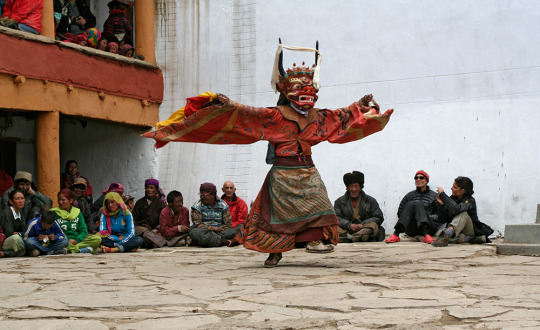
Meeting the Changpa Nomads: Experiencing Nomadic Life in Spiti Valley
Nestled amidst the majestic Himalayas, Spiti Valley is a land of unparalleled beauty and cultural richness. As one explores the enchanting landscapes and interacts with the local communities, there's an opportunity to delve deep into the heart of this region's unique way of life. Recently, I embarked on a journey to Spiti Valley, where I not only got a chance to witness the breathtaking scenery but also had the privilege to meet the Changpa nomads, who have been preserving their nomadic lifestyle for generations. Join me in this immersive adventure as we explore the mesmerizing Spiti Valley, and along the way, discover some fascinating Spiti Valley tour packages Spiti Valley Tour Packages that can make your trip equally remarkable. Additionally, for those interested in the local culture and crafts, we'll also touch upon some great places to shop in Spiti Valley Places To Shop In Spiti Valley.
A Glimpse into the Nomadic Lifestyle
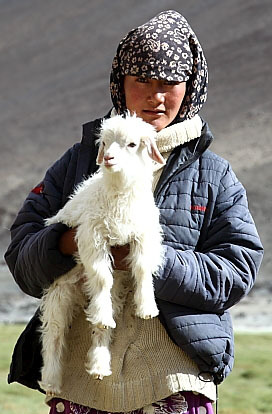
The Changpa people are a semi-nomadic Tibetan ethnic group that have called the high-altitude regions of Ladakh and the Spiti Valley their home for centuries. These nomads are primarily pastoralists, relying on their herds of yaks, goats, and sheep to sustain their way of life. The seasonal migration patterns of the Changpa are a well-choreographed dance with the changing seasons – they move to higher pastures during the warm months and descend to lower altitudes as winter approaches.
Embracing the Changpa Hospitality
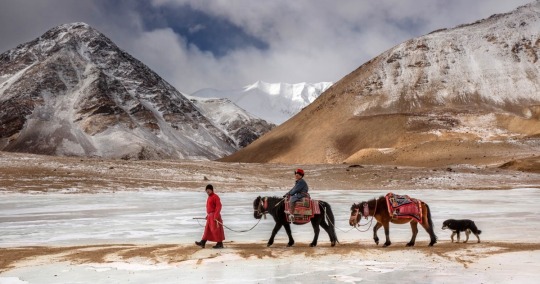
As I embarked on a journey to experience this unique way of life, I was welcomed with open arms by the Changpa nomads. Their hospitality knows no bounds, as they shared their tents, meals, and stories with me. The traditional tents, known as 'rebo,' are woven with yak hair and are surprisingly warm, even in the chilly mountain nights. Sitting around a crackling fire, I had the privilege of listening to tales of their ancestral traditions, the challenges they face in this modern age, and their unwavering bond with their animals.
The Rhythm of Nomadic Life
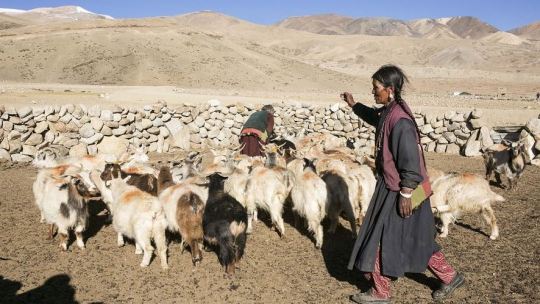
A day in the life of a Changpa nomad is a symphony of simple yet essential tasks. The crack of dawn marks the beginning of a routine that revolves around the well-being of their herds. Milking the yaks and goats is a daily ritual, producing the precious milk that is transformed into butter, cheese, and other sustenance. The nomads' intricate knowledge of the land is awe-inspiring – they can read the signs of nature to predict weather changes, locate water sources, and find the best grazing grounds.
Preserving Traditions in a Changing World
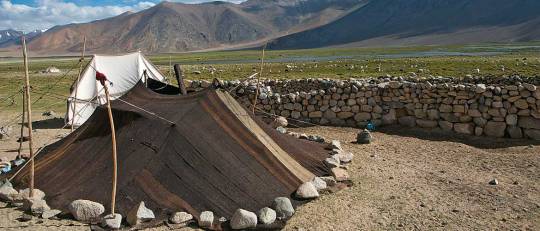
While the Changpa nomads have embraced certain aspects of modernity, such as solar panels to power their tents and some communication devices, they are fiercely determined to preserve their cultural heritage. Their traditional clothing, adorned with intricate designs and vivid colors, is a testament to their identity. Yet, like many indigenous communities, they face the challenges of a changing world – climate change affecting their grazing lands, economic pressures, and the allure of urban life drawing the younger generation away.
The Dance of Seasons: A Nomad's Calendar
In the embrace of the Spiti Valley's rugged terrain, the Changpa nomads have honed a profound understanding of the changing seasons. Their migratory lifestyle isn't just about survival; it's a harmonious dance with nature's rhythm. As spring breathes life into the barren landscape, the Changpa pack their belongings and guide their herds towards the alpine meadows. Here, wildflowers carpet the ground, and the air is tinged with the aroma of fresh grass.
Summer brings with it a bustling atmosphere as the nomads make the most of the warmer months. The yaks and goats thrive on the lush pastures, their milk flowing abundantly. During these months, the Changpa come together, establishing temporary settlements where a sense of community blossoms. Children play and learn alongside their parents, absorbing age-old skills and wisdom that textbooks could never teach.
With the advent of autumn, the Changpa begin their descent to lower altitudes. The landscape changes hues, painting the valley with warm shades of gold and crimson. The air turns crisper, hinting at the approaching cold. The nomads work diligently, gathering provisions for the coming winter. Their connection to the earth is tangible as they store food, prepare wool for crafting warm clothing, and reinforce their tents against the impending snow.
Winter is a time of quiet reflection and resilience. The Changpa retreat to their winter settlements, nestled in valleys where the snow offers insulation against the biting cold. Life slows down, and the focus turns inward. Stories are shared around fires, and traditions are passed down through generations. The yaks and goats are carefully tended, their thick fur providing both sustenance and warmth.
Lessons Learned and Shared
My time among the Changpa nomads was a humbling experience that left an indelible mark on my soul. Their harmonious coexistence with nature, their resourcefulness, and their unbreakable bonds with their animals offer profound lessons for the modern world. As I bid farewell to the rebo and the warmth of the campfire, I carried with me not just memories but a renewed perspective on what it means to truly live in harmony with the environment.
Meeting the Changpa nomads was an invitation to step outside the confines of our modern lives and immerse ourselves in a reality that is both timeless and illuminating. Their story isn't just about survival – it's a testament to the indomitable human spirit, the art of living in harmony with nature, and the beauty of traditions that transcend time. As the wind carried whispers of their songs and laughter, I left the Spiti Valley with a heart full of gratitude and a determination to carry their stories forward, so they may inspire others as they inspired me.
0 notes
Text
Pashmina Shawl
Introduction
Pashmina shawls, also known as cashmere shawls, are exquisite and luxurious garments that have a long and illustrious history. Derived from the fine under fleece of the Himalayan mountain goat called Chyangra (Capra Hircus), these shawls have been woven for centuries in the Kashmir region, which includes territories administered by India, Pakistan, and China. The name "Pashmina" originates from the word "Pashm," referring to the soft and warm wool produced by these majestic goats living at high altitudes in the Himalayas .
Historical Significance of Pashmina Shawls
The story of Pashmina shawls can be traced back to the ancient times when they were revered as a symbol of royalty and nobility. During the Mughal Empire, Pashmina shawls were presented as prestigious gifts, and they became a part of the khilat ceremony, where members of the court were honored with robes made of Pashmina wool. These luxurious shawls also became popular in Europe, especially in France, thanks to the enthusiastic use by Empress Joséphine, the wife of Napoleon Bonaparte . The shawls' association with the French elite elevated their status as a fashion icon.
Production Process of Pashmina Shawls
The production of Pashmina shawls is a labor-intensive and intricate process, involving the delicate handling of the precious Pashmina wool. Each winter, the goats naturally shed their undercoat, and the Changpa nomadic people living in the Ladakh region of India collect the fine wool through combing . The raw Pashmina is then transported to Kashmir, where skilled artisans carry out the rest of the production process.
In the old district of Srinagar, Kashmir, the combing, spinning, weaving, and finishing of Pashmina shawls are traditionally done by hand. It takes around 180 hours to create a single piece of these exceptional shawls . The craftsmanship involved in producing Pashmina shawls is a testament to the skill and dedication of the artisans who have inherited this art from their ancestors.
Terminology and Characteristics of Pashmina
The term "Pashmina" is sometimes misused or misunderstood, leading to confusion about its true nature. Pashmina is any wool under 19 microns in thickness, while true Pashmina is around 12-14 microns thick, making it six times finer than human hair . It is lighter and more delicate than regular cashmere wool, and when blended with silk, it creates a luxurious fabric that is highly prized in the western world.
The Importance of BIS Certification
In recent times, the popularity of Pashmina shawls has led to fraudulent marketing practices where products of inferior quality were falsely labeled as Pashmina, causing financial losses for traditional artisans and nomads who produce genuine Pashmina shawls . To protect the livelihoods of local craftsmen and preserve the integrity of this traditional craft, the Bureau of Indian Standards (BIS) has introduced a certification process to identify and label authentic Pashmina shawls .
Conclusion
The history and production of Pashmina shawls are deeply intertwined with the culture, heritage, and craftsmanship of the Kashmir region. These luxurious shawls have stood the test of time, evolving from symbols of royalty to coveted fashion accessories. The labor-intensive and meticulous production process, combined with the intrinsic beauty and warmth of Pashmina wool, ensures that these shawls remain timeless treasures cherished by people worldwide.
0 notes
Text
Unearthing Adventures: The Trails of Kongka La Pass and Tsaga La Pass

Exploring the hidden gems of Ladakh is an adventure like no other. Nestled amidst the towering Himalayas, two of its most intriguing destinations are Kongka La Pass and Tsaga La Pass. These remote passes, steeped in mystery and offering breathtaking vistas, provide an unparalleled experience for travelers seeking both natural beauty and enigmatic tales. With Kongka La Pass and Tsaga La Pass as our primary focus, let's embark on a journey to uncover the allure of these remarkable locations.
Kongka La Pass
Kongka La Pass, located on the disputed border between India and China, is not just a geographical landmark but also a point of fascination and intrigue. The pass is situated in the Ladakh region of India, at an altitude of approximately 5,171 meters (16,965 feet) above sea level. This high-altitude pass is part of the contentious area known as Aksai Chin, which both India and China claim as their own. Despite its geopolitical significance, Kongka La Pass remains relatively unknown to mainstream travelers, making it a unique destination for those who venture into its rugged terrain.
The landscape around Kongka La Pass is characterized by stark, desolate beauty. The barren, rocky expanses are punctuated by snow-capped peaks, creating a dramatic and otherworldly environment. This area is also known for its harsh weather conditions, with freezing temperatures and strong winds prevailing for most of the year. The pass is not easily accessible, requiring a challenging trek that tests the endurance and resilience of even the most seasoned adventurers.
One of the most intriguing aspects of Kongka La Pass is the numerous reports of unidentified flying objects (UFOs) and extraterrestrial activity. Local legends and various accounts suggest that the area is a hotspot for mysterious sightings, adding an element of mystique to the already enigmatic landscape. Whether these stories are rooted in fact or fiction, they contribute to the allure of Kongka La Pass, drawing curiosity seekers and conspiracy theorists alike.
Tsaga La Pass
Tsaga La Pass, on the other hand, lies further to the southeast of Kongka La Pass, near the border between India and Tibet. Situated at an altitude of approximately 4,620 meters (15,157 feet), Tsaga La Pass is less known for its geopolitical significance and more for its natural beauty and cultural heritage. The pass serves as a gateway to the Changthang region, an area renowned for its stunning landscapes and rich biodiversity.
The journey to Tsaga La Pass takes travelers through some of the most picturesque scenery in Ladakh. Rolling hills, expansive plateaus, and pristine lakes define the landscape, offering endless opportunities for photography and nature appreciation. The region is also home to the nomadic Changpa people, who have lived in harmony with this harsh environment for centuries. Their unique way of life, centered around yak and goat herding, provides a fascinating glimpse into the cultural heritage of Ladakh.

Wildlife enthusiasts will find Tsaga La Pass particularly appealing, as the Changthang region is a haven for rare and endangered species. The area is part of the larger Tibetan Plateau, known for its unique flora and fauna. Visitors may spot the elusive snow leopard, Tibetan wild ass (kiang), and various species of migratory birds. The high-altitude wetlands and marshes around Tsaga La Pass are especially important for birdwatching, attracting avian species from across the globe.
Comparing the Two Passes
While both Kongka La Pass and Tsaga La Pass offer unique experiences, they cater to different types of travelers. Kongka La Pass, with its mysterious aura and challenging terrain, appeals to those seeking adventure and intrigue. The harsh conditions and the tales of UFO sightings make it a destination for thrill-seekers and explorers looking to venture off the beaten path.
In contrast, Tsaga La Pass is more suited for travelers who appreciate natural beauty, wildlife, and cultural experiences. The scenic landscapes and the opportunity to interact with the Changpa nomads provide a more serene and enriching journey. Tsaga La Pass is also relatively more accessible compared to the remote and challenging Kongka La Pass.
Travel Tips for Visiting Kongka La Pass and Tsaga La Pass
When planning a visit to these remote passes, preparation is key. Here are some essential travel tips to ensure a safe and enjoyable journey:
Acclimatization: Both Kongka La Pass and Tsaga La Pass are situated at high altitudes, making acclimatization crucial. Spend a few days in Leh or other lower-altitude areas to allow your body to adjust to the thin air.
Permits: Ensure you have the necessary permits to visit these areas. Due to their proximity to international borders, special permits are often required, which can be obtained from local authorities in Leh.
Weather Conditions: The weather in these high-altitude regions can be unpredictable. Pack appropriate clothing, including layers, thermal wear, and waterproof gear, to stay warm and dry.
Physical Fitness: Both passes require a good level of physical fitness. Engage in regular exercise and cardio training to build stamina and endurance for the challenging treks.
Local Guides: Hiring a local guide is highly recommended. They have invaluable knowledge of the terrain, weather patterns, and cultural nuances, ensuring a safer and more informative experience.
Respect Local Culture: The Changpa nomads and other local communities have rich cultural traditions. Show respect for their customs and way of life by being mindful of local etiquette and practices.
Wildlife Conservation: The Changthang region is a protected area with diverse wildlife. Practice responsible tourism by maintaining a safe distance from animals, not disturbing their natural habitats, and adhering to park regulations.
Hydration and Nutrition: Staying hydrated is crucial at high altitudes. Drink plenty of water and carry energy-boosting snacks to keep your energy levels up during the trek.
Exploring Kongka La Pass and Tsaga La Pass offers a unique opportunity to experience the contrasting yet complementary aspects of Ladakh's natural and cultural heritage. Whether you are drawn to the mysterious allure of Kongka La Pass or the serene beauty of Tsaga La Pass, these remote destinations promise an unforgettable adventure. With proper preparation and a spirit of exploration, you can uncover the hidden gems of Ladakh and create memories that will last a lifetime.
0 notes
Text
Tsaga La Pass in Ladakh: A Hidden Gem in the Himalayas
Ladakh, the land of high passes and stark landscapes, is home to some of the most remote and breathtakingly beautiful regions in India. Among its many awe-inspiring locations, Tsaga La Pass in Ladakh stands out as a lesser-known yet remarkable destination. Located near the Indo-Tibetan border, Tsaga La Pass offers a unique blend of natural beauty, historical significance, and cultural richness. Alongside the more famous Kongka La Pass in Ladakh, Tsaga La Pass provides a fascinating glimpse into the rugged terrain and strategic importance of the region.

Introduction to Tsaga La Pass
Tsaga La Pass in Ladakh is one of the lesser-visited high-altitude passes in the region, situated at an elevation of approximately 15,400 feet. This pass connects the town of Nyoma with the village of Tsaga, providing a crucial link between different parts of southeastern Ladakh. Tsaga La is a strategic pass, given its proximity to the Line of Actual Control (LAC) between India and China, making it significant from both a military and geographical perspective.
The journey to Tsaga La Pass is an adventure in itself, taking travelers through some of the most isolated and unspoiled landscapes in Ladakh. The pass is surrounded by rugged mountains, vast plains, and sparse vegetation, creating a dramatic and starkly beautiful environment. The area is sparsely populated, with only a few nomadic tribes inhabiting the region, giving visitors a sense of stepping back in time.

Strategic Importance of Tsaga La Pass
The Tsaga La Pass in Ladakh holds significant strategic importance due to its location near the LAC. The pass is part of the larger Chushul sector, which has historically been a point of contention between India and China. During the 1962 Sino-Indian War, Tsaga La Pass, along with nearby passes such as Kongka La, played a crucial role in the conflict. The area remains a sensitive zone, with the Indian Army maintaining a strong presence to safeguard the border.
The pass is also part of a network of routes that connect various military posts and observation points in the region. These routes are essential for the movement of troops and supplies, especially given the challenging terrain and harsh weather conditions. The strategic significance of Tsaga La Pass underscores the importance of Ladakh as a frontier region for India, both militarily and politically.
Tsaga La Pass and Its Surroundings
The landscape around Tsaga La Pass in Ladakh is characterized by its raw, untamed beauty. The region is part of the Changthang plateau, a vast expanse of high-altitude desert that stretches across Ladakh and into Tibet. The plateau is known for its extreme weather conditions, with temperatures dropping well below freezing in winter and harsh winds sweeping across the plains.
Despite the harsh environment, the area around Tsaga La Pass is home to a variety of wildlife, including Tibetan wild asses (kiangs), Himalayan marmots, and various species of birds. The region is also inhabited by the Changpa nomads, who have adapted to the harsh conditions and continue to practice traditional pastoralism. These nomads move with their herds of yaks, sheep, and goats, living in portable tents known as "reboos."
One of the most remarkable aspects of Tsaga La Pass is its remoteness. The journey to the pass takes travelers far from the more popular tourist routes, offering a chance to experience the solitude and tranquility of the high Himalayas. The road to Tsaga La Pass is a mix of rough tracks and gravel paths, winding through barren landscapes and crossing several riverbeds. The stark beauty of the region, combined with the sense of isolation, makes the journey to Tsaga La Pass a truly unforgettable experience.

Cultural Significance of Tsaga La Pass
Tsaga La Pass in Ladakh is not just a geographical landmark; it is also a place of cultural and spiritual significance. The pass lies on an ancient trade route that once connected Ladakh with Tibet, facilitating the exchange of goods, ideas, and culture between the two regions. This route was used by traders, pilgrims, and nomads for centuries, and traces of this cultural exchange can still be seen in the region today.
The area around Tsaga La Pass is dotted with small monasteries and stupas, reflecting the deep Buddhist traditions of the region. These religious sites are often located in remote and hard-to-reach areas, blending seamlessly with the rugged landscape. The monasteries serve as centers of worship and meditation for the local population, preserving the spiritual heritage of Ladakh.
The pass is also associated with various local legends and folklore. According to one popular belief, Tsaga La Pass was once guarded by a fierce deity who protected the region from invaders and evil spirits. The local people continue to offer prayers and make offerings to this deity, seeking protection and blessings for their journeys through the pass.
The Journey to Tsaga La Pass
Reaching Tsaga La Pass in Ladakh is no easy feat, but the rewards are well worth the effort. The journey typically begins in Leh, the capital of Ladakh, from where travelers make their way to the town of Nyoma. From Nyoma, the road to Tsaga La Pass takes you through some of the most remote and desolate parts of Ladakh.
The drive to the pass is an adventure in itself, with the landscape changing dramatically as you ascend to higher altitudes. The road passes through several small villages, where you can witness the traditional way of life of the local people. The terrain becomes increasingly rugged as you approach the pass, with steep ascents and hairpin bends adding to the thrill of the journey.
At the top of Tsaga La Pass in Ladakh, you are greeted with panoramic views of the surrounding mountains and valleys. The sense of isolation and the sheer scale of the landscape are overwhelming, creating a feeling of being at the edge of the world. The pass offers a unique perspective on Ladakh's rugged beauty, with its stark contrast between barren mountains and clear blue skies.
Tsaga La Pass vs. Kongka La Pass
While Tsaga La Pass in Ladakh is a hidden gem, the Kongka La Pass in Ladakh is more well-known due to its historical significance. Located to the northeast of Tsaga La, Kongka La Pass is another high-altitude pass that has played a key role in the region's strategic landscape. The pass was one of the focal points during the 1962 Sino-Indian War, and it remains a sensitive area with restricted access.
The landscape around Kongka La Pass is similar to that of Tsaga La, with vast stretches of barren land, towering peaks, and an overall sense of desolation. However, Kongka La is more difficult to access due to its location within the restricted zone, making Tsaga La Pass a more viable option for travelers seeking to explore Ladakh's remote regions.
Conclusion
Tsaga La Pass in Ladakh is a destination that embodies the rugged beauty, strategic importance, and cultural richness of the region. While it may not be as well-known as some of Ladakh's other high passes, it offers a unique experience for those willing to venture off the beaten path. The journey to Tsaga La Pass takes you through some of the most remote and breathtaking landscapes in the Himalayas, providing a glimpse into the history, culture, and natural beauty of Ladakh.
Whether you are a history buff, an adventure enthusiast, or a cultural explorer, Tsaga La Pass offers something for everyone. Its proximity to the Kongka La Pass in Ladakh adds an extra layer of intrigue, highlighting the strategic importance of this remote region. As you stand at the top of Tsaga La Pass, surrounded by the vastness of the high Himalayas, you will be reminded of the timeless beauty and enduring spirit of Ladakh.
0 notes